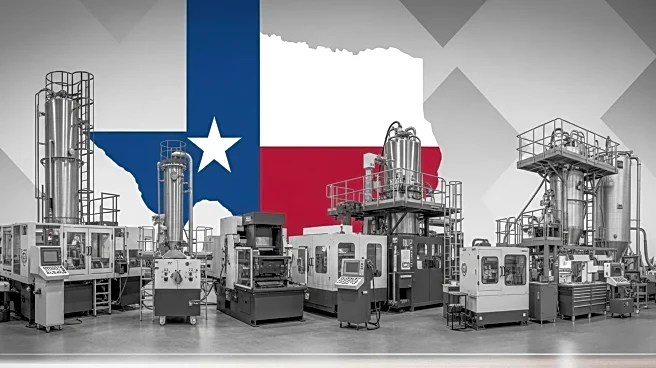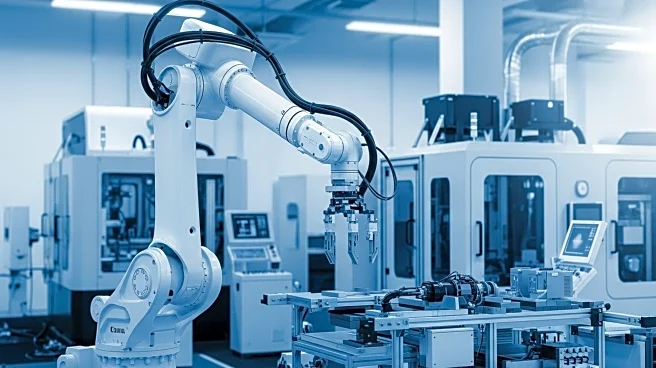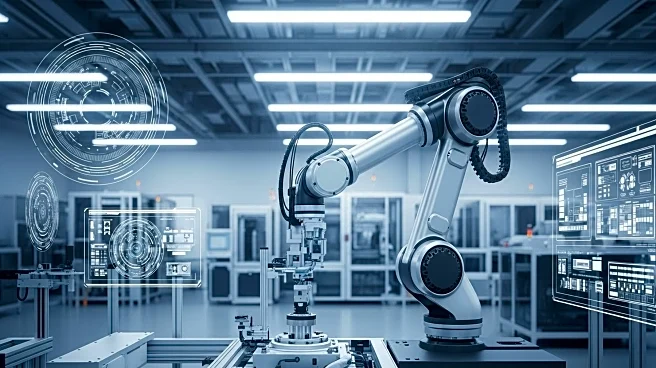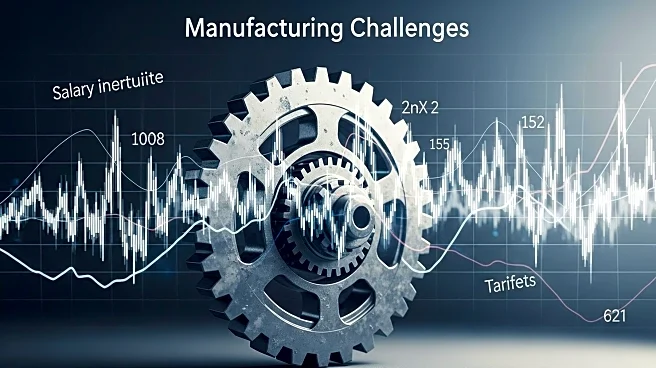What is the story about?
What's Happening?
The Texas manufacturing sector continued to expand in September, albeit at a slower pace compared to previous months. According to the Texas Manufacturing Outlook Survey, the production index fell to 5.2, indicating below-average output growth. Other measures, such as capacity utilization and new orders, also showed declines, reflecting a slowdown in manufacturing activity. Despite stable company outlooks, broader business conditions worsened, with the general business activity index dropping to -8.7. Labor market measures suggested a slight decline in employment, while price and wage pressures remained largely unchanged.
Why It's Important?
The moderation in growth within the Texas manufacturing sector highlights challenges faced by the industry, including fluctuating demand and economic uncertainties. As a key contributor to the state's economy, changes in manufacturing activity can impact employment rates and economic stability. The sector's performance is closely watched by policymakers and business leaders, as it influences decisions on investment and resource allocation. The survey results may prompt discussions on strategies to support manufacturing growth and address underlying issues affecting the sector.
What's Next?
Expectations for future manufacturing activity remain positive, though optimism has waned. The future production index and general business activity indicators suggest continued growth, albeit at a slower rate. Stakeholders may focus on addressing factors contributing to the slowdown, such as supply chain disruptions and labor market challenges. The next survey release in October will provide further insights into the sector's trajectory and inform policy decisions.
Beyond the Headlines
The survey results underscore the importance of adaptability and resilience in the manufacturing sector. As external factors such as global trade dynamics and technological advancements influence operations, manufacturers must innovate and optimize processes to remain competitive. The long-term implications may include shifts towards automation and digitalization to enhance efficiency and reduce dependency on volatile market conditions.
AI Generated Content
Do you find this article useful?














